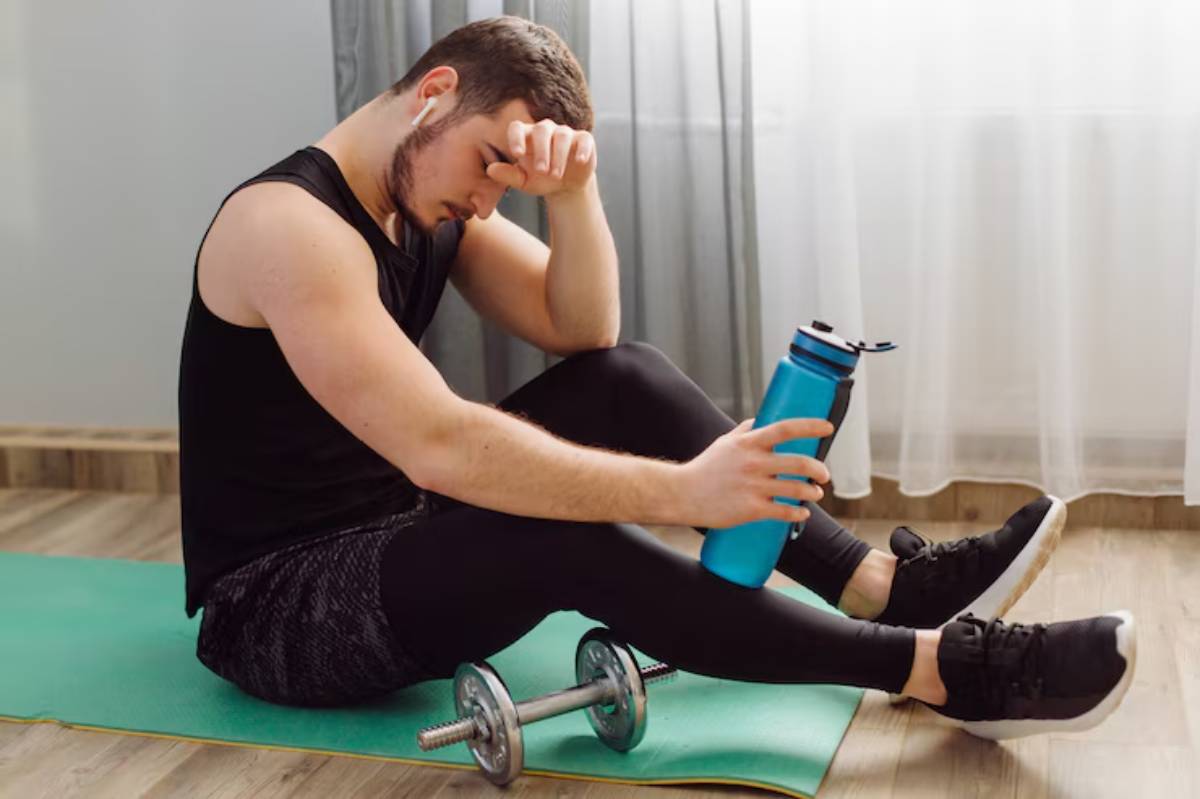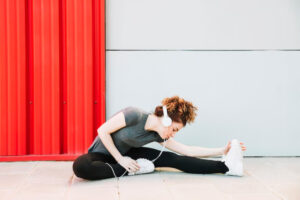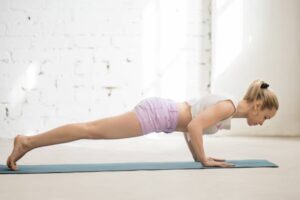The Fitness Blog

How to Combine Yoga With Weight Training
In today’s fitness world, you no longer have to choose between barbells and balance poses. The rise of hybrid workouts has made it clear: yoga and lifting are not opposites—they’re allies.
If you’re a lifter wanting better mobility or a yogi looking for strength, mixing both can lead to real change. This guide will help you set up a yoga gym routine. It aims to boost performance, lower injury risk, and build total-body strength.
So, if you’re tired of sore hips, tight hamstrings, or plateaus in the gym, it’s time to rethink your training. A good cross-training yoga plan might be the key to strength and sustainability.
Understanding the Core: Why Yoga Complements Weight Training
Weightlifting builds raw strength and muscle. But without mobility, joint control, and proper recovery, your gains can hit a ceiling—or worse, lead to injury. That’s where yoga steps in.
Let’s break it down:
1. Mobility & Flexibility Gains
Heavy lifts often tighten muscle groups—think quads, chest, or hip flexors. Yoga lengthens these areas, restoring balance and improving your lifting form.
Better ankle and hip flexibility makes deeper squats easier. Yoga poses like Lizard or Garland can help improve this flexibility.
2. Injury Prevention & Recovery
Yoga encourages slow, controlled movements and breath awareness. These aid recovery and teach you to listen to your body, especially on rest days.
The British Journal of Sports Medicine states that regular yoga helps reduce muscle soreness and speeds up recovery for strength athletes.
3. Enhanced Body Awareness
In yoga, you constantly adjust alignment and activate stabiliser muscles. This builds proprioception—your body’s ability to sense movement and position, which translates directly into safer, more effective lifts.
4. Mental Focus & Breath Control

Yoga improves mental resilience. By linking breath and movement, you stay calmer under strain—on the mat and under the barbell.
Quick Guide: How to Integrate Yoga and Lifting Seamlessly
Here’s a high-level action plan to combine yoga and weight training effectively:
- Choose your primary focus: strength, flexibility, endurance, or recovery
- Alternate days or stack sessions wisely
- Use yoga as warm-up (dynamic) or a cooldown (static/stretch-based)
- Add 2–3 dedicated yoga sessions weekly
- Prioritise breath, not just poses
- Modify your lifting plan on yoga-heavy days
- Track joint health and recovery markers over time
The key is not doing more, but doing smarter.
Step-by-Step Guide: Creating Your Yoga + Lifting Routine
Step 1: Set Your Weekly Training Structure
You can combine yoga and lifting in three main ways, depending on your goals and time:
Option A: Alternate Days
- Monday – Upper body weights
- Tuesday – Vinyasa yoga or core-focused flow
- Wednesday – Lower body weights
- Thursday – Yin or mobility yoga
- Friday – Full-body weights
- Saturday/Sunday – Rest or restorative yoga
Best for: Balanced strength and mobility development.
Option B: Stack Yoga After Weights
- Lift first (30–60 mins), then do a 20-minute cooldown flow
- Focus on static stretches, hip openers, or spinal releases
Best for: Lifters looking to reduce soreness and improve flexibility.
Option C: Use Yoga as Active Recovery
- Replace traditional cardio or rest days with gentle flows
- Target breathing, fascia release, and deep tissue activation
Best for: Deload weeks or injury prevention.
Step 2: Know Which Yoga Styles to Use
Not all yoga is created equal—some enhance your training, others may hinder recovery.
| Yoga Style | Best Use in Gym Routine |
| Vinyasa Flow | Warm-up or active recovery |
| Power Yoga | Cross-training on off days |
| Yin Yoga | Deep stretch and cooldown |
| Restorative | Evening recovery or rest days |
| Hatha | Alignment and mobility focus |
Combine intense yoga with light lifting days. Use gentle yoga after heavy training for balance.
Step 3: Key Yoga Poses for Lifters
Include these in your weekly cross-training yoga plan:
- Low Lunge (Anjaneyasana) – Opens hip flexors
- Lizard Pose – Targets groin and deep hips
- Downward Dog – Builds shoulder stability and stretches calves
- Supine Twist – Aids spinal mobility and digestion
- Pigeon Pose – Releases tension in the glutes and lower back
- Bridge Pose – Engages glutes and stabilises the lower spine
- Cat-Cow Flow – Warms up spine and core
Hold each pose for 30–60 seconds or flow through them slowly with breath.
Pro Tip: Doing yoga before weights can lower your power. So, stay dynamic if you do yoga first.
Important: Use yoga on rest days. Gentle flows help muscles heal and lower mental fatigue.
Common Mistakes:

- Overtraining: Combining intense yoga (e.g. Power) with heavy lifting can lead to fatigue
- Poor scheduling: Stretching too much before lifting can make joints less stable.
- Ignoring rest: More movement isn’t always better—your body needs downtime too
Best Practices & Additional Insights
1. Track Recovery Over Time
Keep a log of how your body feels after workouts. Do DOMS decrease after adding yoga? Are your joints less stiff? Use that feedback to refine your approach.
2. Watch for Mobility Gaps
If squats feel tight or your shoulders hurt during presses, try yoga drills for those areas.
3. Stay Consistent, Not Perfect
Two focused yoga sessions a week will beat five inconsistent ones. Make it sustainable by fitting yoga into your natural rhythm.
FAQs: Yoga and Lifting—Answered
Can yoga really help me lift heavier?
Absolutely. Better mobility and joint control can help your lifting technique. They also increase your range of motion and lower your injury risk. This means you can lift more weight safely.
Should I do yoga before or after lifting?
Preferably after. Yoga as a warm-up should focus on dynamic movement. Save static poses and deep stretches for your post-lift cooldown or recovery days.
How long should yoga sessions be?
It can take anywhere from 15 to 60 minutes, depending on your goals. Even 15 minutes of targeted hip openers or spinal twists post-gym can have huge benefits.
Will yoga interfere with my muscle growth?
Not if done properly. Light yoga boosts recovery, improves blood flow, and eases tension. It helps you keep your form and lift more often.
Is it OK to do yoga and weight training on the same day?
Yes, just schedule it wisely. Lift first if you’re combining both in one session. Keep yoga gentle and avoid intense styles on heavy lifting days.
Conclusion: Balance Strength With Stretch
When done right, combining yoga and lifting leads to better results than either alone. You gain flexibility and strength without stiffness. Also, mindfulness helps improve your gym performance.
A smart yoga gym routine isn’t about doing everything—it’s about doing the right things in the right order. By being consistent and planning a bit, you’ll have fewer injuries, improved mobility, and a stronger body and mind.
Ready to integrate yoga into your weightlifting routine? Start small, stay consistent, and feel the difference within weeks.









